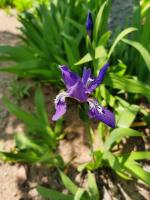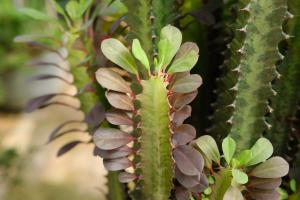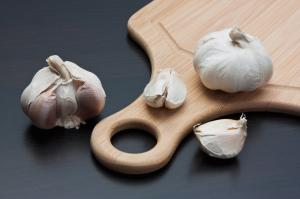What Kind of Plants and Trees are in the Desert?
When most people think of deserts, they envision a barren, lifeless landscape. However, deserts are home to a diverse array of plant and tree species adapted to the arid climate. In this article, we will explore the various types of vegetation that can be found in desert environments.
Cacti
Cacti are perhaps the most iconic desert plants. These succulents are well-adapted to the arid environment, as they store water in their thick, fleshy stems. There are over 2,000 types of cacti, ranging from tiny species only a few inches tall to towering giants over 60 feet in height. Some cacti even produce edible fruit, such as the prickly pear and the saguaro.
Joshua Trees
Joshua trees are primarily found in the Mojave Desert of California and Nevada. They are characterized by their distinctive shape, with long, spiky leaves jutting out from a central trunk. Joshua trees are slow-growing and can live for hundreds of years. In addition to being important habitat for a variety of desert wildlife, they are also revered by many Native American tribes for their medicinal properties.
Creosote Bushes
Creosote bushes are commonly found in the Sonoran and Chihuahuan Deserts of Arizona, Texas, and Mexico. They are adapted to the desert environment through their ability to conserve water and tolerate high temperatures. Despite being toxic to most animals, creosote bushes provide important food, shelter, and nesting sites for desert reptiles and insects.
Yucca
Yucca plants are native to the arid regions of North and Central America. They have spiky, evergreen leaves and white, bell-shaped flowers that bloom in the spring. Yucca plants are important food sources for desert animals, and some species even have a symbiotic relationship with yucca moths, which pollinate the plant in exchange for a place to lay their eggs.
Desert Grasses
Despite the common misconception that deserts are devoid of plant life, there are numerous types of grasses that thrive in the arid environment. Desert grasses are typically low-growing and have small leaves to reduce water loss through transpiration. They play an important role in preventing soil erosion and providing food for grazing animals such as bighorn sheep, pronghorn antelope, and kangaroo rats.
Conclusion
As we can see, there is a surprising amount of plant and tree diversity in the desert. From iconic cacti to slow-growing Joshua trees, these species have adapted incredible survival strategies to thrive in an environment that is often harsh and unforgiving. By understanding and appreciating these unique desert plants, we can gain a deeper appreciation for the beauty and complexity of our natural world.

 how many times do yo...
how many times do yo... how many planted tre...
how many planted tre... how many pine trees ...
how many pine trees ... how many pecan trees...
how many pecan trees... how many plants comp...
how many plants comp... how many plants can ...
how many plants can ... how many plants and ...
how many plants and ... how many pepper plan...
how many pepper plan...

































